‘The Lincoln Lawyer’ writers love food. Here are their fave L.A. lunch spots
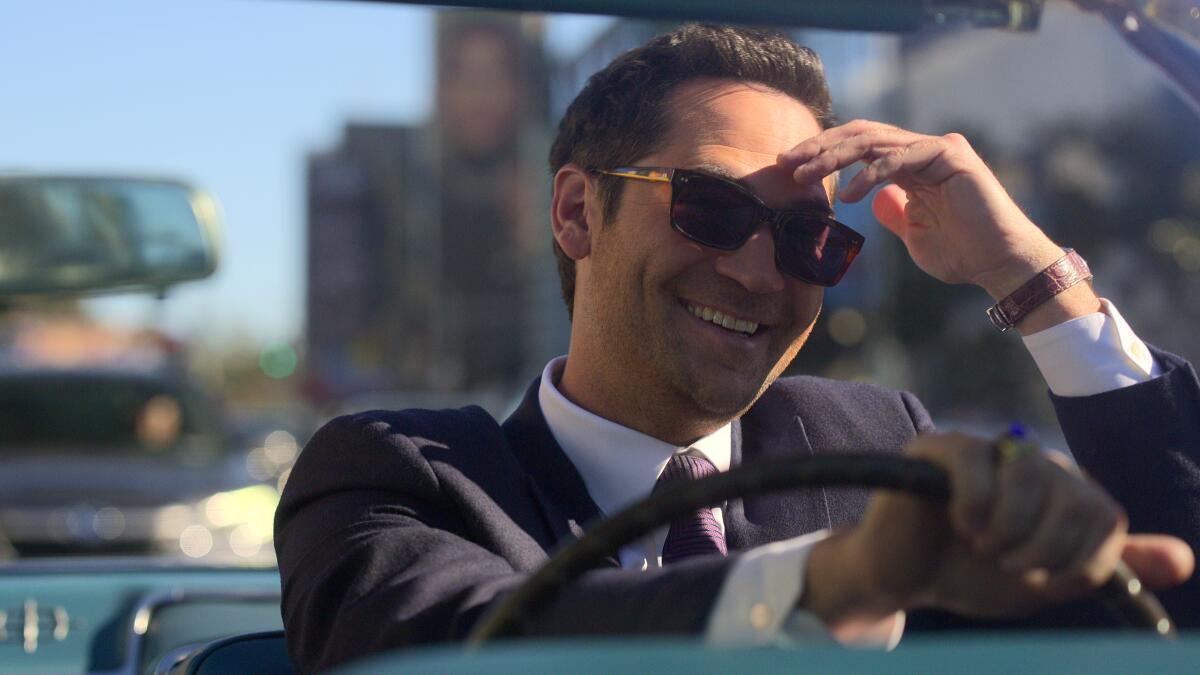
- Share via
Welcome to Screen Gab, the newsletter for everyone who’s ready to ditch work early and start their summer weekend.
That’s because this week’s issue, along with all the usual recommendations for streaming movies and TV shows to watch, features an excuse to leave the house: “The Lincoln Lawyer” showrunner Ted Humphrey reveals his favorite L.A. spots for a working lunch with the legal drama’s writers. Plus, we prepare for the end of “High School Musical” and recommend two historical docuseries essential for understanding our present moment.
The complete guide to home viewing
Get Screen Gab for everything about the TV shows and streaming movies everyone’s talking about.
You may occasionally receive promotional content from the Los Angeles Times.
ICYMI
Must-read stories you might have missed
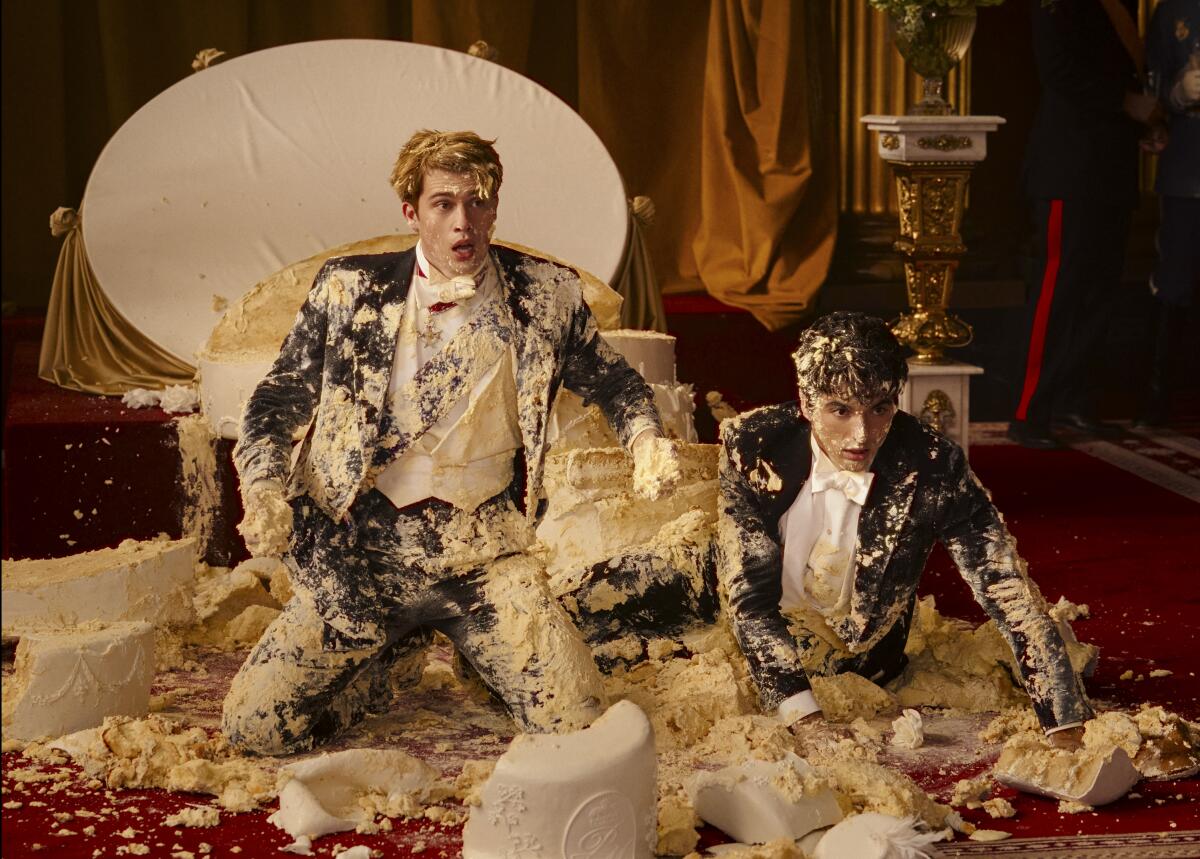
‘Red, White & Royal Blue’ is the gay rom com we’ve been waiting for: Liberated from the pressure to say something profound, Prime Video’s new film succeeds where others have failed: smuggling queer ideas into a straight genre.
‘Star Trek’ made its first ever musical episode, but was it any good?: For the first time in its 57-year existence, “Star Trek” made a musical episode. TV critic and “Star Trek” fan Robert Lloyd discusses the episode with staff writer and musical theater lover Ashley Lee.
How ‘Painkiller’ turned legal disclaimers into moving tributes to opioid victims: The Netflix miniseries dramatizes the story of OxyContin’s rise, but the beginning frames of each episode start with a disclaimer read by the families of real victims of the opioid crisis.
In ‘The Exorcist’ and beyond, William Friedkin gave the devil his due: Evil took on powerfully cinematic form in “The Exorcist,” “Sorcerer” and other films directed by the Oscar-winning William Friedkin, who died Monday at 87.
Turn on
Recommendations from the film and TV experts at The Times
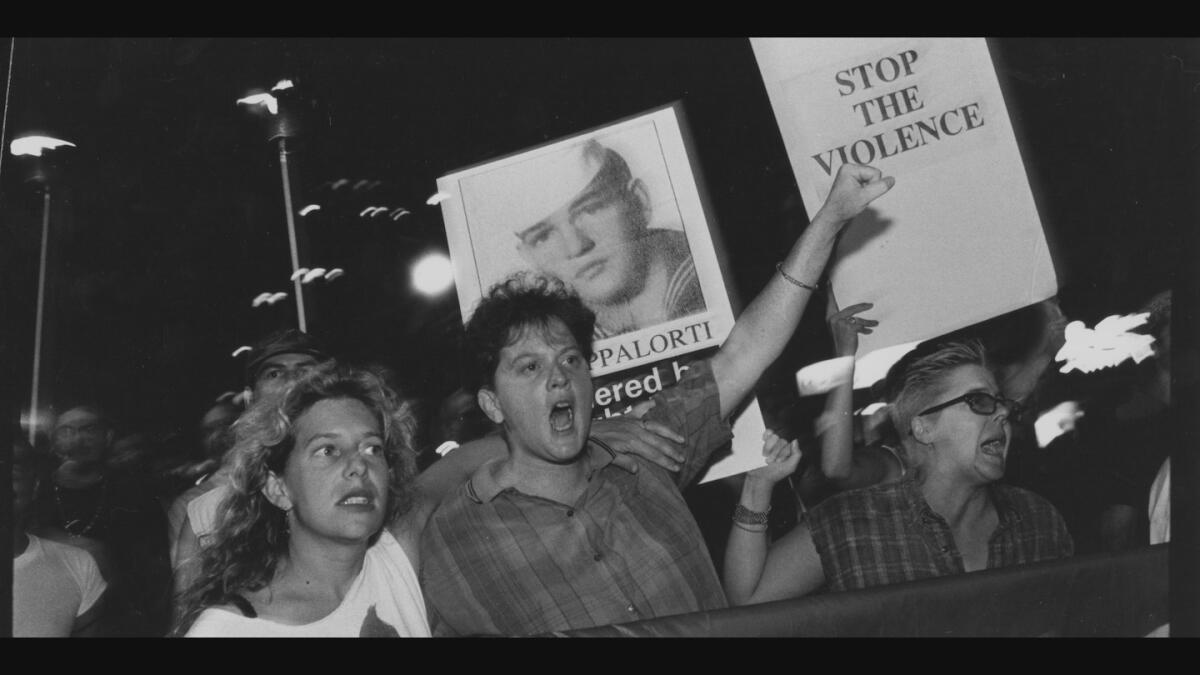
“Last Call: When a Serial Killer Stalked Queer New York” (Max)
A textbook example of how to tell a true crime story that is evocative and suspenseful, but never forgets the humanity of the victims. Produced by Oscar nominee Howard Gertler (“All the Beauty and the Bloodshed,” “How to Survive a Plague”) and directed by Anthony Caronna (“Susanne Bartsch: On Top”), the HBO docuseries transports viewers back to early ’90s New York City, when a serial killer terrorized a community already ravaged by the AIDS crisis and a rash of hate crimes.
Between 1991 and 1993, the dismembered bodies of four men — with little to connect them except that they were last seen at gay hangouts in Manhattan — were discovered in trash bins many miles outside the city. They were Thomas Mulcahy, a married father of four; Anthony Marrero, a sex worker; Peter Anderson, a banker; and Michael Sakara, a gregarious typesetter. In “Last Call,” they emerge as fully realized, complicated individuals who were doomed to horrific deaths by intolerance — and whose loved ones are still reckoning with their loss.
The police investigation, hampered by bureaucracy and prejudice within the ranks of law enforcement, went nowhere, so LGBTQ+ advocates, primed by the fight against AIDS, stepped into the void. When the culprit was ultimately brought to justice more than a decade after the last murder, it became clear he had a long history of violence that went unpunished because of the identity of the victims. And while much about the era it depicts feels like a distant memory, “Last Call” also feels disturbingly timely, as state legislatures across the country push anti-LBGTQ+ bills and just weeks after O’Shae Sibley, a gay Black man, was fatally stabbed after voguing at a Brooklyn gas station. —Meredith Blake
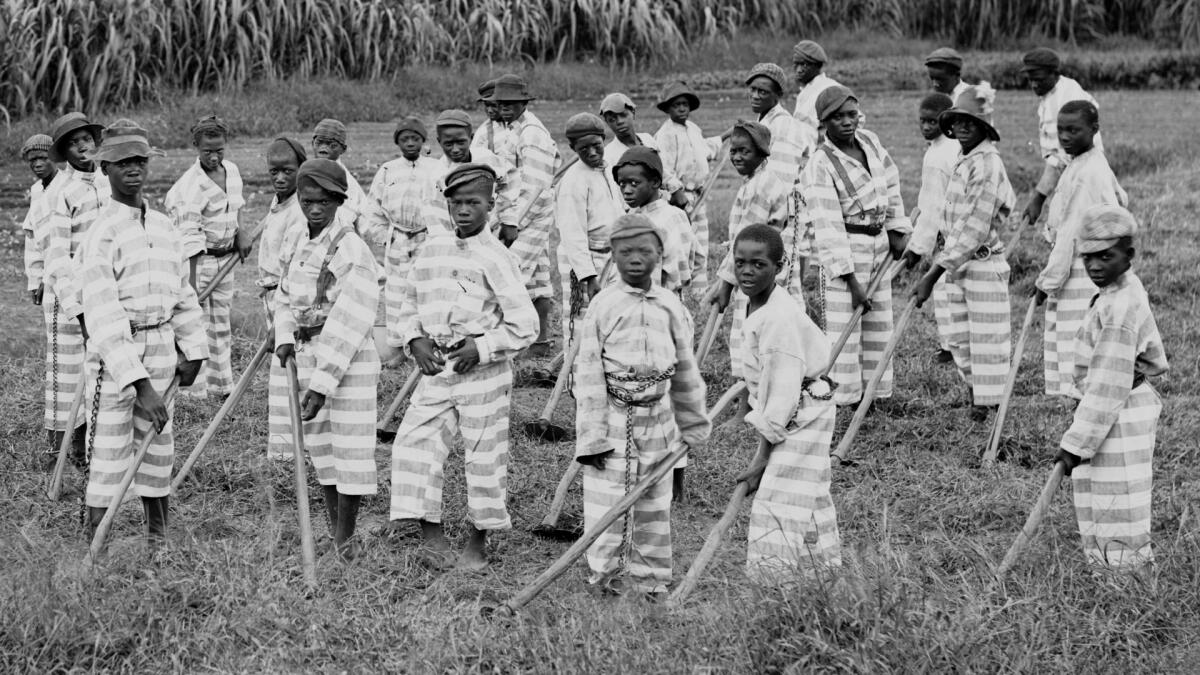
“Sound of the Police” (Hulu)
The 2020 murder of George Floyd and other killings of unarmed Black men and women at the hands of law enforcement have put a harsh spotlight on the historically tense dynamic between Black Americans and the police. Three years after the Floyd tragedy, troubling incidents of police brutality have continued. Now, ABC News documentary “Sound of the Police,” streaming on Hulu, explores the evolution of those violent interactions, tracing their history back to the era before emancipation from slavery. The project, from Stanley Nelson (the Oscar-nominated “Attica”) and Valerie Scoon, explores the complexities of policing in Black communities. “Sound of the Police” is at times an uncomfortable watch, and will likely be criticized by opponents of critical race theory and others who wish to prevent honest instruction about the United States’ troubling history. But it is essential viewing. —Greg Braxton
Catch up
Everything you need to know about the film or TV series everyone’s talking about
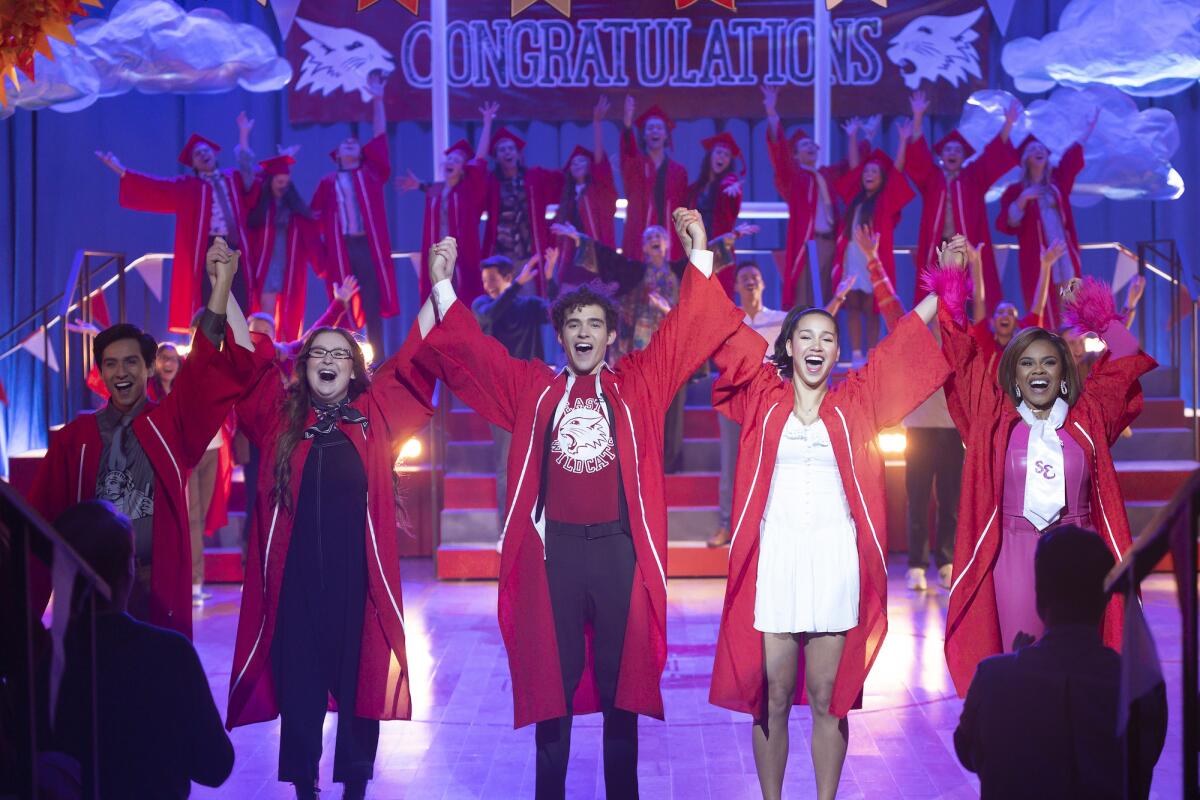
Four years ago, I couldn’t believe that “High School Musical: The Musical: The Series” (Disney+) was something that actually existed. For starters, the premise itself is pretty dizzying — a mockumentary TV show about high schoolers putting on a stage version of “High School Musical” at the same high school where the movie was filmed, all led by a drama teacher who appeared in the background of the film. It’s also the rare Disney project to play with — and poke fun at — the company’s legacy with more commitment than the occasional joke (see also: 2007’s “Enchanted”), balancing self-awareness about what the Disney Channel movie captured back in 2006 and sincerity about what high schoolers are grappling with today.
Since it debuted in 2019 as part of the streaming platform’s launch, “HSM:TM:TS” has yielded dozens of wonderful musical numbers (like Julia Lester’s Season 2 rendition of the best “Beauty and the Beast” song), countless niche theater jokes, the franchise’s first gay love storyline and the rise of Olivia Rodrigo, who ended up penning original music for her character before becoming a Grammy-winning pop star.
While its third season had the group take part in a documentary about performing in the first high school production of “Frozen,” the fourth and final season goes even further with the meta setup: the students are now tasked with staging “High School Musical 3,” despite the fact that their campus is being used as a filming location for “High School Musical 4” (for Disney+, of course). The concluding eight episodes include cameos from the original movies’ actors, as well as endings for its core crew. —Ashley Lee
Guest spot
A weekly chat with actors, writers, directors and more about what they’re working on — and what they’re watching
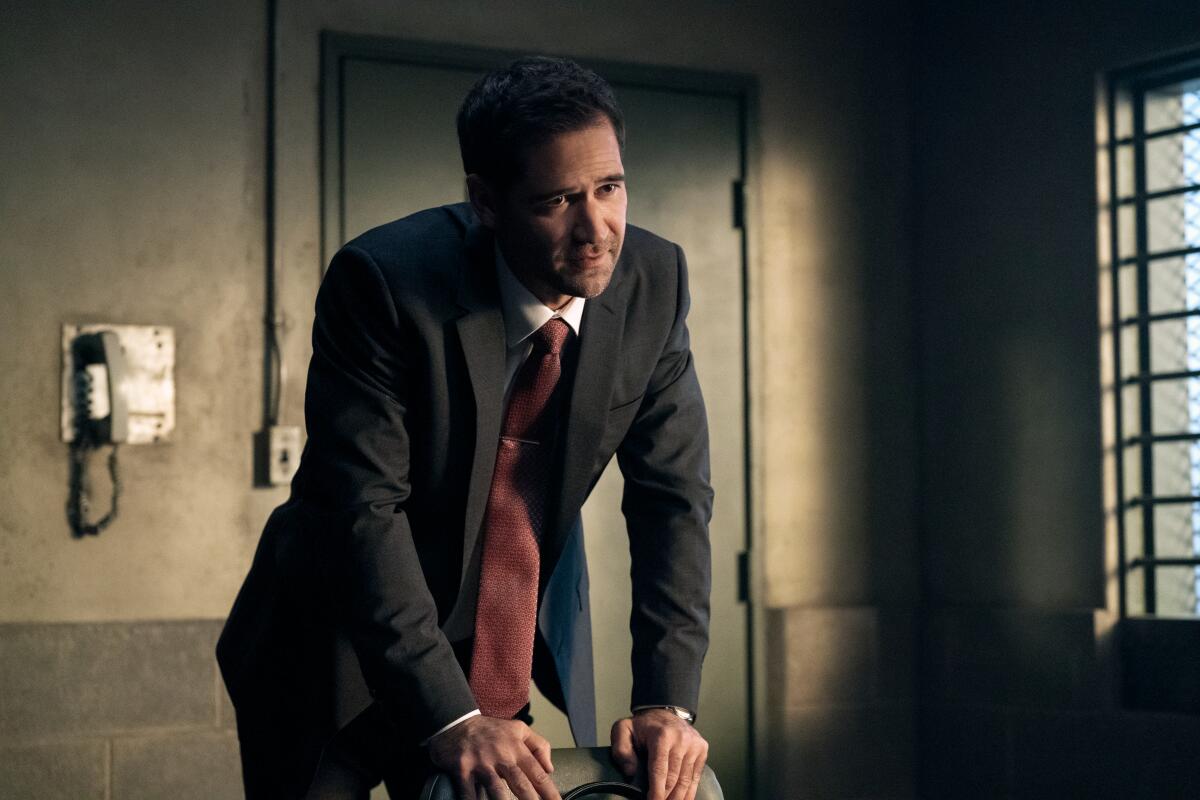
It’s not uncommon to hear that a film or TV series treats its setting as a character, and in the world of novelist Michael Connelly (“Blood Work,” “Bosch”), that character is recognizably, indelibly Los Angeles. But as Manuel Garcia-Rulfo, star of “The Lincoln Lawyer” (Netflix) told The Times last year, the legal drama’s L.A. is particularly invested in the Latino experience, prizing taco trucks and mezcalerias over hamburger stands and beer joints. (Oh, yes, and food plays a prominent role.) With Season 2 now streaming, showrunner Ted Humphrey stopped by Screen Gab to share where he grabs a working lunch, other legal dramas he loves and more. —Matt Brennan
What have you watched recently that you are recommending to everyone you know?
I love food, chef culture and Chicago, so “The Bear” [Hulu] has been terrific. Very engaging. But every time I recommend it, whomever I’m talking to has already seen it, so apparently I’m late to the party.
What is your go-to “comfort watch,” the movie or TV show you go back to again and again?
I’ve seen “The Godfather” and “The Godfather Part II” [Paramount+] more times than I can count, and nothing is more of a creative touchstone for me. (For instance, in Season 2 of “The Lincoln Lawyer,” we did a callback to the flickering lightbulb scene with Don Fanucci and Robert De Niro as the young Vito Corleone in “The Godfather Part II.”)
In television, “The Wire” [Max] remains in my opinion maybe the greatest series ever filmed, and I constantly find inspiration in it. (I have also been fortunate in my career to be able to work with quite a few members of that incredibly talented cast — we had many of them on “The Good Wife.”)
There’s no shortage of great legal shows you can look to for inspiration for “The Lincoln Lawyer.” What’s one you would be honored to be mentioned in the same breath with and why?
Well, it’s probably not fair to say “The Good Wife” [Paramount+] since I worked on it, but all of us who were involved with it are extremely proud of it. I was a huge fan of “The Practice” [Prime Video, Hulu] because it dared to be realistic and authentic at a time when not many network shows were (I still think the documentary death penalty episode is brilliant). But for a deep cut, I’d say the British series “Rumpole of the Bailey” [PBS Passport]. Rumpole was kind of a British Mickey Haller in that he was an underdog himself who truly loved criminal defense and wasn’t interested in more “prestigious” areas of the law — and he was fantastic at defending his clients. I also have a soft spot for it because I used to watch it with my late parents, who were big fans.
Manuel Garcia-Rulfo recently went on a downtown taco crawl with The Times, inspired in part by Haller’s own love of a good meal. Where do you go and what do you eat when you want a good working lunch?
Unfortunately, as a showrunner, I usually eat lunch at my desk (often Mendocino Farms). But when we are shooting, I get more chance to be out and about. During Season 2, I had some great working meals at RiceBox in DTLA, pretty much anywhere in Grand Central Market and at Salazar in Frogtown (near where Lisa’s restaurant was located in Season 2). Mickey’s obsession with food is part of Michael Connelly’s books, but our whole writing staff is equally obsessed, so that’s a fun aspect of the character for us to adapt to the screen.
The complete guide to home viewing
Get Screen Gab for everything about the TV shows and streaming movies everyone’s talking about.
You may occasionally receive promotional content from the Los Angeles Times.



